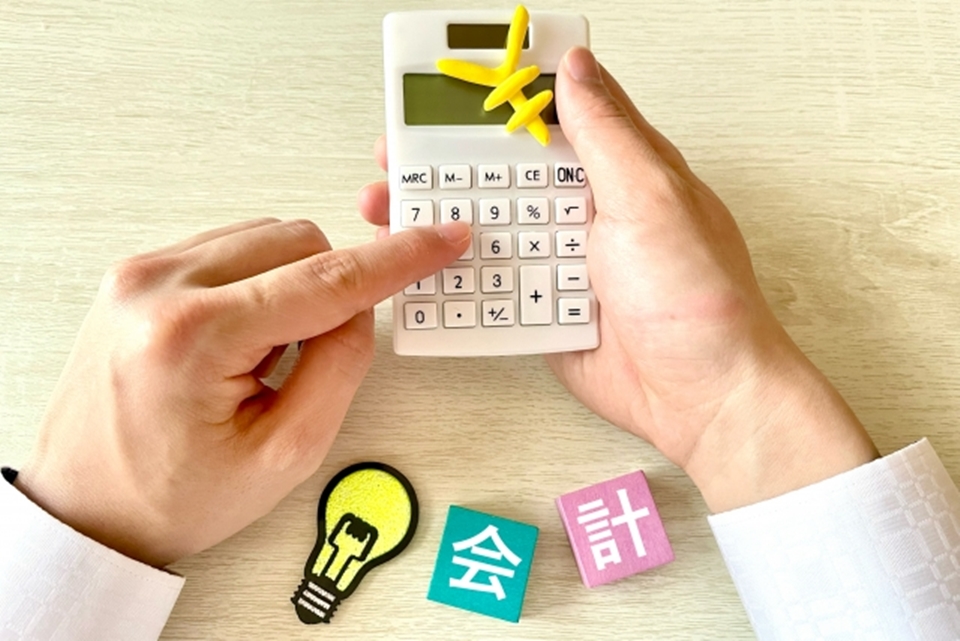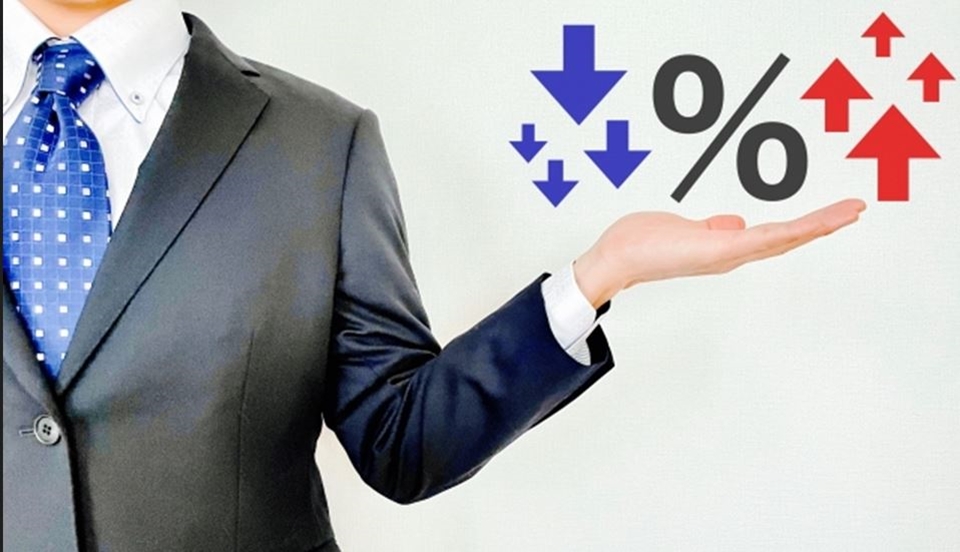A relationship that loses if you don’t know the product sales business and the profit margin! What are the points to be aware of along with the profit margin?

Product sales is a business that can be started with a small amount of money, and in today's Internet environment, even inexperienced people can easily start it. It is an era where individuals can work on side jobs, so the number of new entrants is increasing every year.
There are various forms of product sales, and they can be broadly divided into methods of purchasing and selling from wholesalers and manufacturers, and resale of products purchased from retailers.
In this article, for Beginners aiming to start a product sales business, I will try to I will explain the profit margin in the product sales business. The basics of both forms are the same, and there is no change in buying low and selling high.
目次
- 1 Essential Accounting Terms to Know Profit Margins in Product Sales
- 2 How to find the profit margin in the product sales business
- 3 Benefits of knowing the profit margin in product sales
- 4 General profit margin guideline for product sales
- 5 Relationship between sales price and profit margin in product sales
- 6 How to increase profit margin in product sales
- 7 The key to success in product sales is profit margin and turnover
- 8 Summary
Essential Accounting Terms to Know Profit Margins in Product Sales

A correct understanding of profit margins in purchasing and sales is essential knowledge to succeed in the product sales business. It can be calculated if you can do the four arithmetic operations, so it is not difficult at all. However, there are quite a few people who misunderstand how to calculate profit margins and do not make as much profit as they thought even after selling. If you are unsure, please read this articleLearn how to generate the correct profit margin.
A proper understanding of profit margins requires a grasp of basic accounting terminology. The structure of product sales is simple, so you don't need to have as complicated knowledge as corporate accounting, but at least you should understand the following terms.
- Sales: total amount earned from sales of products
- Cost of sales: Purchase amount of sales items
- Gross profit: Amount obtained by subtracting cost of sales from sales (gross profit)
- Operating profit: amount after subtracting total expenses (packaging costs, outsourcing costs, delivery costs, advertising costs, etc.) from gross profit
The profit you should keep in the product sales business isGross margin and Operating Profit, and the formula is as follows using accounting terms.
- Gross profit = Sales - Cost of sales
- Operating profit = Sales - Cost of Goods Sold - Total Expenses
Gross profit is calculated by subtracting cost of goods sold from sales. Operating profit is the gross profit minus the total cost of sales. Now that we have covered the basics, let's move on to explaining profit margins.
How to find the profit margin in the product sales business

The profit margin is the ratio of profit to sales, so it can be obtained by dividing profit by sales as follows.
Profit Rate = profit / sales x 100
If the target to calculate the profit rate is the gross profit, it will be the gross profit rate, and if it is the operating profit, it will be the operating profit rate. Merchandise sales incur various necessary expenses, so it is effective in running a business to consider daily purchases and sales activities based on the operating profit margin.
The method for calculating the operating margin is as follows.
Business Profit margin = (sales - cost of sales - total expenses) / sales x 100
(sales - cost of sales = gross profit), so
Operating Margin = (Gross Profit - Total Expenses) / Sales x 100
Let's take a concrete example. A product with a purchase price of 150 yen was sold for 300 yen, and 100 units were sold. If the cost at that time was 60 yen per item, the operating profit margin can be derived by the following calculation.
- Sales: ¥300 x 100 = ¥30,000
- Cost of sales: ¥150 x 100 = ¥15,000
- Total expenses: 60 yen x 100 = 6,000 yen
- Operating margin: (30,000 - 15,000 - 6,000) / 30,000 x 100 = 30%
If you do business without being conscious of the operating profit margin, you may end up in a situation where you don't have any money left even though you are making a gross profit. For example, in the above example, if the cost was 150 yen per item, the profit would be zero. Don't miss it.
However, it is inefficient to calculate expenses such as packing and shipping costs for each shipment, so it is better to grasp them on a monthly basis. After a few months of working on sales, you'll generally know the average cost of your business, so it's useful to know that as an expense ratio.
So the sales structure is
Sales = Cost of sales + Operating income + Total expenses
So, the total expense ratio can be calculated as follows.
Total Expense ratio = total expenses / sales x 100
I will explain in detail later, but you can increase your profit by keeping this expense ratio as low as possible.
Benefits of knowing the profit margin in product sales

For those of you who didn't fully understand the profit margin from the explanation so far, I think I was able to organize it in my head. This profit There are three merits to knowing the rate, so please know it next time and make use of the profit rate in your own business.
Understanding the profits of your product sales business
There are some people who think that there is no particular problem and sell products without worrying about the profit margin because they are making a profit by purchasing products at a low price and selling them at a high price. and it becomes difficult to predict the future.
Product sales are a business that repeats purchase, sale, and collection, so if you are not conscious of the profit rate, it is not uncommon for the monthly profit to be small and the funds to be short-circuited.
If you know your operating profit margin on a regular basis, you will be able to know which products you should focus on selling and whether your expenses are becoming heavy, Efficiency of your business can be achieved.
Used as a basis for purchasing decisions
Profitability is an important criterion when purchasing products. By suppressing the purchase of products with low profit margins and actively purchasing products with high profit margins, highly profitable and sound management is possible.
Even if you purchase with an assumed profit margin of 15% to 30%, the market price will actually rise and fall in the process of selling. Judgment is required.
If it is a practical item, a consumable item, or a product with little competition, it will not be bad inventory even if the market price drops, and it will not put pressure on the profit. If you can judge, let's put it in perspective to see off the purchase.
As an indicator for management plan
Profitability also plays an important role when looking at your business over the long term. For example, if the capital is 1 million yen and the operating margin is 25%, the profit will be 250,000 yen. Combining this with the turnover rate, which will be described later, allows us to think about a long-term purchase and sales plan and how to utilize funds.
Also, the market environment is constantly changing, so if you review the profit margin at least once a month and adjust the plan according to the reality, the product sales business will stabilize.
General profit margin guideline for product sales

It is difficult to talk about the average profit margin of product sales because the cost structure differs depending on the type of business and the items handled.In terms of gross profit margin, overall product sales are roughly20~30%.
In particular, the difference in gross profit margin is large when divided into new and used products, and the general trend is that new products are low at 15-20% and used products are high at 30-40%. .
Even new products, premium products with limited sales volume, region, and period tend to have high profit margins. However, as new products are easy to handle, there are many sellers and the purchase price cannot be greatly different, so the profit margin is not so high. Still, the turnover rate is faster than second-hand goods, so it will be easy for beginners to handle.
The reason why the profit margin of second-hand goods is high is that there are bargains and premium products, and the purchase price can be kept low by selecting the route.
However, it is not easy to know the market price of second-hand goods because the condition of each item is different even for the same product. A certain amount of discernment is required when purchasing.
In addition, it takes time and money to clean and repair purchased items and take beautiful pictures for listing, compared to selling new items. Due to these circumstances, even if second-hand goods have a high profit margin, it does not mean that beginners can make money immediately.
Relationship between sales price and profit margin in product sales

When determining the selling price of a product, it is broadly divided into There are two ways.
One is to find the profit rate by deriving a reasonable selling price from the market price, and the other is to calculate the selling price backward from the profit rate you want to achieve. Let's look at each.
How to determine the selling price from the market price
This is a general sales price setting method for product sales. We investigate the competitive situation in the market for products that are the same as or similar to the product we sell, know the market price, and assume a reasonable price. Considering the price at the average price or slightly below the market price is the basis for creating stable sales.
Even if the operating profit margin calculated by the selling price is lower than expected, you can be aggressive if you can expect a lot of sales. However, if there is a lot of competition, we will carefully consider purchasing in anticipation of a drop in market prices.
How to determine the sales price by leaving the reverse from the desired operating margin
It is a method to determine the operating profit margin you want to secure first and then calculate the sales price backwards from there. This is a method used when selling products that are not widely available in the market, second-hand products, imported products that have no competition, etc.
However, if you set a high price, you may not be able to earn as much sales as you expected, so you need to adjust the selling price while watching the market reaction.
In addition, some people often make mistakes in the calculation method when calculating backwards, so I will explain the correct calculation method with an example.
Example: How to calculate the selling price when selling a product with a purchase price of 7,000 yen at a profit rate of 30%
(The calculation method is the same for both the gross profit rate and the operating profit rate)
Well One incorrect selling price back calculation method is as follows.
- 7,000 yen (purchase value) x 30% (profit rate) = 2,100 yen (profit amount)
- 7,000 yen ( Purchase price) + 2,100 yen (profit amount) = 9,100 yen (selling price)
Let's verify if this is really a 30% profit.
The profit margin is (profit ÷ sales x 100), so it can be obtained by the following formula.
2,100÷9,100×100≒23.1%
As you can see, we were far from the 30% profit margin we wanted.
Profit margin is a percentage of sales (sales price) that is profit. However, in the above calculation method, when calculating the profit amount, the purchase price is multiplied by the profit rate, so the calculation result will be 30% of the purchase price, not 30% of the selling price.
Correct The calculation method is as follows.
Selling price: 7,000 yen (purchase price) ÷ (1-30%) = 10,000 yen
After verification,
Profit (10,000-7,000) ÷ Selling price (10,000) x 100 = 30%
, and a 30% profit rate is secured.
To explain the correct calculation method, the selling price is simply expressed as follows.
Selling price (100%) = profit (30%) + purchase price (70%)
In other words, if 30% of the selling price is profit, the remaining purchase price is 70%.
The purchase price is 7,000 yen, so if this is 70% of the selling price, the selling price is
7,000 yen ÷ 70% = 10,000 yen
How to increase profit margin in product sales

When there are many competitors in the product sales business, there are times when you have no choice but to compete on price. In such cases It is necessary to devise ways to increase the profit margin so that even if the price is cut, the profit will not be adversely affected, so let's see how to do it.
Lower purchase price
In order to secure the expected profit even if the sales price is lowered, it is effective to lower the purchase price.
- Increase purchase volume and lower purchase price
Depending on the supplier, there is a volume discount menu, and even if there is no volume discount menu, we will negotiate a discount by increasing the purchase volume.
- Change supplier
We will change to a supplier who can get the same product at a lower price. If possible, you can switch to purchasing directly from the manufacturer or purchasing from a wholesaler, or if you can get similar products cheaply from a third country, you can also use it.
Cut down costs
Cost reduction also has the impact of greatly increasing the profit margin depending on the method. Items that can be reduced will be thoroughly cut, targeting transportation costs, labor costs, outsourcing costs, payment fees (exhibition malls, etc.), utility costs, communication costs, etc. In particular, labor costs and outsourcing costs account for a large proportion of the costs, so they should be considered first.
The key to success in product sales is profit margin and turnover

Once you've sorted out your profit margin knowledge,Another important point in the product sales businessrotation rate.
Imagine a restaurant. The faster the turnover of customers, the more profitable the store. It's the same with merchandising. Purchased products sell immediately, purchase again, and sell again. If the turnover is good like this, the sales will increase steadily.
The turnover rate is an indicator of how many products were sold in a given period. It is called product turnover rate or inventory turnover rate, but they refer to the same thing. For example, "the turnover rate is 5 times in a year" means that the inventory is replaced 5 times in a year. The higher the turnover rate, the more products are sold, so it is calculated using the following formula.
Turnover rate = sales (cost of sales) / average inventory value
The reason why sales are set as cost of sales is to make the comparison standard the same level as the inventory amount.
If the monthly cost of sales for a product is 1 million yen and the average inventory value is 100,000 yen, the turnover rate is 10. In other words, the inventory rotates 10 times in a month, so you can see that it is necessary to stock up at least once every three days.
If you look at the turnover rate by product, category, or overall, and change the period from one month, half a year, to one year, you can see the actual situation of your product sales business. I can see it. By checking the turnover rate at least once a month and analyzing the sales situation in detail, it is possible to increase sales efficiency while maintaining appropriate inventory.
And, as a result of the analysis, if there is a hot-selling product with a good turnover rate, we will increase purchases, and depending on the situation, we will focus on selling that product with a view to raising the price. On the other hand, if there is a product that has a poor turnover rate and does not contribute to sales, we will make sales even if we lower the price to promote inventory digestion.
The profit margin increases or decreases depending on the product, but by taking measures while checking the turnover rate on a regular basis, the sales amount will increase and the inventory will decrease, which will improve the overall profitability of the business. . This is the same whether it is a side job or a full-fledged business.
Summary

As you've seen in this article, profit margins are very important for a merchandising business.
Product sales is a business that is easy for even first-timers to start, but if you deal with products with low profit margins, you may end up holding inventory or spending too much money before you get used to it, and in the worst case, you may end up in the red. can also be
Therefore, you need to work on products with high profit margins and high turnover as much as possible to stabilize your business. It would be ideal to find and sell a product with a high ratio of both, but it is quite difficult to do so, so it would be better to expand the business while maintaining a good balance. Working hard in this area is the key to a successful product sales business.
And there is a product sales business that can be expected to have a high profit margin by selling new products that are easy for beginners to work on. To put it bluntly, it is “import resale from China”.
It is difficult to differentiate products, especially for new products, from suppliers in Japan. However, China is now home to many of the world's leading e-commerce marketplaces, led by the Alibaba Group.
Similar products sold in Japan can be purchased at about 1/3 the cost, and depending on the EC site, the number of listings is over 1 billion items, which is an order of magnitude more. has a sufficient selection.
Speaking of importing from China, some people may feel that the threshold is high, but if you use an import agency, it is possible to do business in the same way as selling goods in Japan.
Our company "THE direct flight" provides various services to customers as a professional import agent. We also accept advice from experienced dedicated staff at any time, so please feel free to contact us from the inquiry page below.

Until the end Thank you for reading!




